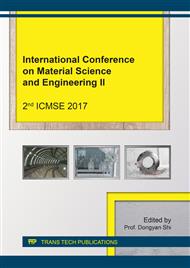p.64
p.71
p.76
p.84
p.91
p.97
p.105
p.110
p.117
The Comparison of Surface Modification Methods of the Heavy Metals Adsorption of Activated Carbon from Rice Husk
Abstract:
Surface modification of activated carbon (AC) could be done through different methods in order to modify their specific physical and chemical properties to facilitate metals removal from wastewater. Three methods were used to modify the rice husk AC (RHAC) including the use of (1) HNO3, (2) dithizone and (3) the combination of HNO3 with dithizone. These modification agents were increased its affinity towards the desired pollutant. The modification methods demonstrated the effective process for the metal ions adsorption capability and the removal of them from water. For Ni2+ and Cd2+ adsorption, RHAC was modified by HNO3 giving the best adsorption capacity in comparison with using dithizone or the combination of HNO3 with dithizone. That adsorption was reached 17.23 mg/g for Ni2+ and 29.61 mg/g for Cd2+. Additionally, the surface area, which was characterized by BET (Brunauer–Emmett–Teller) of RHAC, was 710.8 m2/g and DA micropore volume was 0.447 (cm3/g). Especially, the only modified RHACs had the peak of N-H functional group by using Fourier transform infrared spectrum (FTIR). Besides, the only RHAC modification by HNO3 had peak of C=O. That significantly contributed to increase the metal ions adsorption capacity of RHAC.
Info:
Periodical:
Pages:
91-96
Citation:
Online since:
February 2018
Authors:
Keywords:
Price:
Сopyright:
© 2018 Trans Tech Publications Ltd. All Rights Reserved
Share:
Citation:


